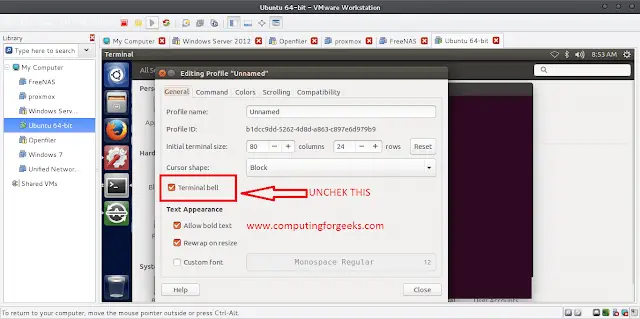In ASP.NET, managing client script files can be a complex and time-consuming task. This is where the ‘ScriptManager’ and ‘ScriptManagerProxy’ controls come in handy. They are used to manage client script files on web pages and improve the performance and maintainability of web applications. In this article, we will explore the differences between ‘ScriptManager’ and ‘ScriptManagerProxy’, and how they can be used in ASP.NET web applications.
What is ScriptManager?
The ‘ScriptManager’ control is a server control that is used to manage and register client script files on web pages. It is typically placed at the top of the page, on the master page, or on the main content page. The ‘ScriptManager’ control can combine multiple client script files into a single request, and can also minify and compress the script files to reduce their size. This reduces the number of requests made to the server and improves the performance of the page.
Syntax: The basic syntax for using ScriptManager in a web form is as follows:
- Add a ScriptManager control to your web form. This can be done either by dragging and dropping the control from the Toolbox onto your form or by manually adding the control to your form’s markup.
<asp:ScriptManager ID="ScriptManager1"
runat="server"></asp:ScriptManager>
Example:
HTML
<%@ Page Language="C#" AutoEventWireup="true" CodeBehind="Default.aspx.cs" Inherits="MyApp.Default" %> <!DOCTYPE html> <head runat="server"> <title>neveropen</title> </head> <body> <form id="form1" runat="server"> <asp:ScriptManager runat="server"></asp:ScriptManager> <div> <!-- your content goes here --> </div> </form> </body> </html> |
In this example, the ‘ScriptManager’ control is added to the web page using the <asp:ScriptManager> tag. It is placed inside the <form> tag, which is required for server controls to work. The ‘ScriptManager’ control is responsible for registering and combining all the client script files required by the page and its child controls.
What is ScriptManagerProxy?
The ‘ScriptManagerProxy’ control is a server control that is used to manage and register client script files for a specific child control on the page. It enables the child control to request client script files independently of the parent page, while still benefiting from the script combining and minification features of the ‘ScriptManager’. This is useful when the child control requires additional client script files that are not needed by the parent page, or when the child control is used on different pages with different script requirements.
Syntax: Here’s the basic syntax for using ScriptManagerProxy in ASP.NET:
- Add a reference to the System.Web.Extensions assembly to your project.
- Add the ScriptManagerProxy control to your content page or user control as follows:
<%@ Register Assembly="System.Web.Extensions,
Version=4.0.0.0, Culture=neutral,
PublicKeyToken=31bf3856ad364e35"
Namespace="System.Web.UI.WebControls"
TagPrefix="asp" %>
<asp:ScriptManagerProxy
ID="ScriptManagerProxy1"
runat="server">
...
</asp:ScriptManagerProxy>
Example: Here’s an example of how to use ‘ScriptManagerProxy’ on a web page:
HTML
<%@ Page Language="C#" AutoEventWireup="true" CodeBehind="Default.aspx.cs" Inherits="MyApp.Default" %> <!DOCTYPE html> <head runat="server"> <title>neveropen</title> </head> <body> <form id="form1" runat="server"> <asp:ScriptManager runat="server"></asp:ScriptManager> <div> <uc:MyUserControl runat="server"> <Scripts> <asp:ScriptReference Path="~/Scripts/MyScript.js" /> </Scripts> </uc:MyUserControl> </div> </form> </body> </html> |
In this example, the ‘ScriptManagerProxy’ control is added to a user control using the <Scripts> tag. The user control is then added to the web page using the <uc:MyUserControl> tag. The ‘ScriptReference’ tag inside the <Scripts> tag specifies the client script file that is required by the user control.
Below is a table of differences between ScriptManager and ScriptManagerProxy:
|
ScriptManager |
ScriptManagerProxy |
| It is a full-featured ASP.NET control. | It is a partial implementation of ScriptManager. |
| It can be placed on a page. | It cannot be placed on a page. |
| It registers client script files. | It shares script files with the parent page. |
| It manages script dependencies. | It delegates script management to the parent page. |
| It supports ScriptReference and ScriptPath elements. | It supports ScriptReference only. |
| It provides ScriptResource.axd | It does not provide ScriptResource.axd. |
| It can be used to enable partial-page rendering (UpdatePanel control). | It cannot be used with UpdatePanel control. |
| It can manage user-specific scripts with the EnableScriptGlobalization property. | Cannot manage user-specific scripts. |
| It can be used with ScriptManagerProxy to create a nested hierarchy. | It is used to create a nested hierarchy of ScriptManagers. |
In conclusion, ‘ScriptManager’ and ‘ScriptManagerProxy’ are two important components of the ASP.NET AJAX framework that serve different purposes. The ‘ScriptManager’ control is used to manage client-side scripts, while ‘ScriptManagerProxy’ is used to enable AJAX functionality on a page that does not already have a ‘ScriptManager’ control. While both are essential components in web application development, understanding their differences and appropriate use cases can help developers optimize their code and enhance the user experience.




